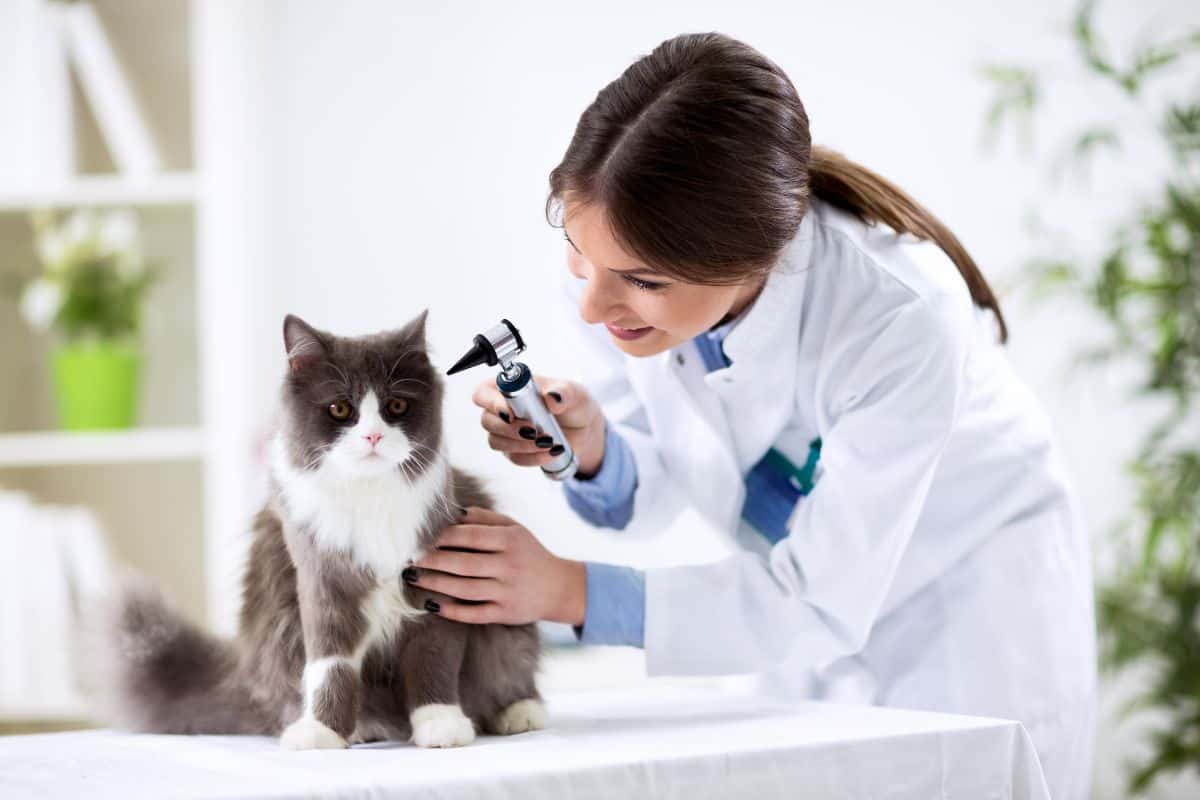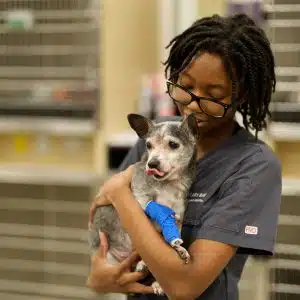The Significance of Early Discovery: Insights From a Vet Oncologist
Early detection of cancer in pets is an important topic for pet proprietors and vet experts alike. Veterinary oncologists stress the value of acknowledging subtle indicators that may indicate significant health and wellness problems. Common signs and symptoms commonly go unnoticed until they rise. Comprehending these early indication and advancements in analysis techniques can make a substantial distinction. What steps can family pet owners require to enhance their pets' opportunities of early medical diagnosis and much better treatment end results?
Comprehending Cancer Cells in Family Pets: Common Kinds and Symptoms
While lots of pet proprietors may not recognize it, cancer cells is a considerable wellness issue influencing pets, a lot like it performs in human beings. Common sorts of cancer cells in animals consist of lymphoma, mast cell growths, osteosarcoma, and mammary lumps. These malignancies can show up in various methods, relying on their location and kind. Signs and symptoms typically consist of unexplained weight loss, consistent throwing up, adjustments in appetite, or unusual swellings and bumps. Pets may also display lethargy, problem breathing, or hesitation to workout, which can indicate underlying health and wellness problems. Early indicators can be refined, making it vital for family pet proprietors to be observant of their pets' habits and physical problem. Recognizing these usual types and associated signs can equip proprietors to look for vet treatment without delay, possibly leading to earlier diagnosis and treatment choices. Acknowledging the indications of cancer cells in family pets is an essential step in the direction of boosting their health and quality of life.
The Role of Veterinary Oncologists in Early Detection
Veterinary oncologists play an important role in the early detection of cancer cells in pets, as their specialized training equips them with the abilities essential to recognize refined indicators that might be ignored by family doctors. They use a combination of clinical knowledge and advanced diagnostic devices to examine individuals completely - Veterinary Oncologist. By recognizing very early signs and danger elements, oncologists can guide pet dog proprietors toward prompt treatments, enhancing the chances of effective therapy
Furthermore, vet oncologists commonly work together with general practitioners to develop screening methods customized to certain types or age, improving the performance of very early detection initiatives. They inform pet proprietors on the importance of routine exams and awareness of changes in habits or physical problem. Via these proactive procedures, vet oncologists greatly add to boosting outcomes for pet dogs identified with cancer, emphasizing the important nature of their function in vet medical care.
Advancements in Diagnostic Techniques for Pet Cancer Cells
Advancements in diagnostic methods have considerably improved the capability to discover cancer cells in animals at earlier phases. Strategies such as advanced imaging, consisting of MRI and CT scans, supply detailed interior sights, allowing vets to identify growths that might not be palpable. Furthermore, the growth of minimally intrusive treatments, such as fine needle aspirates and biopsies, enables exact sampling of tissues for histopathological examination with minimized anxiety for the pet.
Arising molecular diagnostics, including genetic testing and biomarker recognition, are changing the landscape of veterinary oncology. These methods can identify particular cancer cells types and predict actions to therapy, promoting individualized treatment plans. Innovations in lab techniques, such as fluid biopsies, are starting to provide non-invasive alternatives for keeping an eye on growth development and therapy efficacy. Jointly, these developments stand for a substantial leap onward in veterinary medication, highlighting the crucial role of very early discovery in enhancing outcomes for family pets diagnosed with cancer cells.
How Pet Dog Owners Can Acknowledge Caution Indications
Just how can animal proprietors become cautious in acknowledging possible warning indicators of cancer? Understanding of physical and behavioral adjustments in animals is crucial. Common signs consist of uncommon lethargy, anorexia nervosa, or sudden weight adjustments. Pet proprietors need to likewise take notice of persistent vomiting or looseness of the bowels, which might signal underlying problems.
Adjustments in the skin, such as lumps, bumps, or sores that do not heal, call for prompt veterinary attention. In addition, owners must keep in mind changes in drinking practices, raised peeing, or difficulty in breathing. Unexplained limping or pain might additionally be indicators of more severe problems.
Normal veterinary check-ups can help determine these look at this website caution indicators early. By keeping a close monitoring of their pet dogs' health and behavior, owners can play a key view role in early detection, potentially resulting in much better results must cancer be identified. Acknowledging these indications may considerably affect a family pet's high quality of life.
The Effect of Very Early Detection on Treatment Outcomes
Early detection of cancer cells in pets plays an essential role in determining therapy end results, as it usually enables a broader variety of restorative choices. When cancer is detected in its beginning, veterinarians can implement much less intrusive therapies, enhancing the possibility of successful treatment. Early-stage cancers may additionally react much better to chemotherapy or radiation, bring about enhanced survival rates and total lifestyle for the family pet.
Additionally, prompt medical diagnosis assists in a more customized treatment strategy, lining up with the particular demands of the pet. This can include tailored medicine regimens or medical interventions that are much less aggressive. Alternatively, late-stage discovery frequently causes restricted choices, more hostile treatments, and poorer prognoses. Consequently, the relevance of early discovery can not be overstated; it essentially modifies the trajectory of treatment, making it essential for family pet proprietors to stay cautious for any type of indicators of disease in their precious companions.
Regularly Asked Questions

Just How Can Diet Plan Influence Cancer Cells Risk in Pet Dogs?
Diet plan considerably affects cancer threat in animals, as specific nutrients and food types can either prevent or promote tumor development. A balanced, nutrient-rich diet regimen may aid reduce the chance of developing cancer cells in animals.
Are Specific Types Much More Prone to Cancer?
Certain pet types, such as Golden Retrievers and Martials artists, display greater cancer sensitivity due to hereditary proneness. Likewise, some feline types also show raised cancer dangers, highlighting the relevance of breed-specific health awareness amongst pet owners.
What Are the Costs Linked With Early Cancer Cells Detection?
The expenses related to very early cancer cells detection can differ significantly, incorporating diagnostic examinations, consultations, and prospective therapies - Veterinary Cancer Specialist. Purchasing these services usually results in far better health results, inevitably saving on a lot more extensive future medical costs
Can Vaccinations Prevent Cancer in Family Pets?


Injections might reduce the danger of certain cancers in pet dogs, particularly those connected to viral infections. However, their efficiency differs, and pet owners need to speak with vets for customized advice relating to inoculation and cancer cells prevention methods.
How Often Should Family Pets Be Screened for Cancer?
Pets ought to normally be screened for cancer yearly, particularly as they mature or if they show threat variables. Normal vet exams can help identify potential issues early, improving treatment outcomes and overall health management.
Early detection of cancer cells in pet dogs is an essential topic for pet owners and vet specialists alike. Early indicators can be refined, making it necessary for pet dog proprietors to be observant of their animals' behaviors and physical condition. Vet oncologists play a crucial duty in the very early detection of cancer in pets, as their specialized training outfits them with the abilities required to identify refined indicators that may be neglected by general experts. By additional hints keeping a close observation of their animals' health and actions, owners can play an essential role in very early detection, potentially leading to far better results should cancer cells be identified. Early detection of cancer cells in animals plays an important duty in establishing treatment outcomes, as it typically allows for a bigger variety of therapeutic choices.